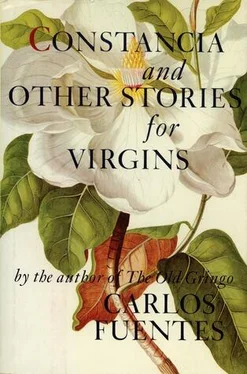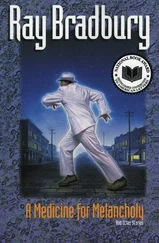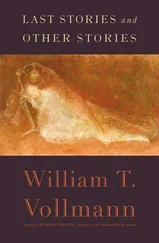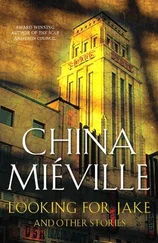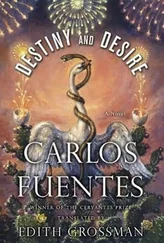They were giving up. This was getting ridiculous. We just liked to get their goat, we repeat.
Then our dispute was interrupted by an ancient woman who came out of the watchman’s hut at the entrance to the project. Shhh, she said, with a finger pressed to her toothless lips, shhh, don’t disturb the child; all the shouting upsets him.
We dropped the argument; but the old woman was carrying a wedding gown, white and filmy, that contrasted with the black severity of her own attire. It had to be her, the mother of the watchman; for God’s sake, what was the name?
— Him? Jerónimo Mateos.
— No, his mother.
— Heredad Mateos, at your service. Don’t make any noise. It makes him very nervous.
A scream. The sound of a pitiful scream came from inside the hut. We ran to see what had happened; the engineers, some of them, made a gesture of indifference; others, the sign that someone is a little crazy, a finger moving in circles near the temple. We ran; we were excited, anticipating a sign, without even knowing it, that would take us beyond our innocent complacency. Then everything happened at once: we went into the shack where Señora Heredad Mateos was living, a room full of filmy tulles, brocade bodices, and jeweled veils. Oh, my pet, what happened? she asked, and we were looking at a little boy about twelve years old, dressed as if for a costume ball or a pastoral, a very fair child, with wavy blond hair, false eyelashes, and a dreamy look, who had just pricked his finger on the seamstress’s needle: blood oozed out and one of us took the stained veil from him, the Swiss-organdy dress with English embroidery, it forced us to look at it and recognize it, but the child ran off, and we watched him go. We followed, running after him, but he disappeared with the speed of light; he glowed for a moment and then disappeared, where? We didn’t know how to express the fact that he hadn’t simply vanished, he had gone into the construction site, and at the same time somewhere else, into a space we had never seen before …
We returned to the watchman’s hut, converted to a seamstress shop by Doña Heredad Mateos, who was sequestered there to prevent gossip in the neighborhood. Now the old lady was shaking her gray head with a mixture of disapproval and resignation, and we turned back together, clasped hands, and in our free hands we held the veil, the dress, stained with the blood of the child.
— It can’t be. You must be wrong.
— You’ve forgotten already? It can’t be.
— Then I’m right.
— No, I mean that it’s the same dress. It’s unforgettable.
— I haven’t forgotten it either. But it can’t be.
— We’d better go ask her.
But we didn’t dare, as if both of us — Carlos María, José María — were afraid that if the mystery were lost, our souls would be, too.
The old lady shakes her head, picks up the needle the child dropped, puts it in a pincushion, goes back to her work, singing a wordless song.
— I tell you it’s Catarina’s dress.
Perhaps we both think that although the mysterious can never be obvious, we had at hand a way to get closer to it. It’s true: we were now near the place where we worked, the garden that we had to restore in the midst of the hopelessly twisted ugliness of the city’s premature ruins.
We looked at the construction zone. We said it was a web of contorted materials torn from the earth and abandoned there. All the metallic elements seemed revived by a final, fiery cold meeting; this late afternoon’s sickly capricious light played over all the angles of the remnants of foundations, of buildings, of columns and spiral staircases, of balconies, of cars and hardware, all mixed together, tangled up, forged with a glimmer of living copper here, of dying gold there, with the opacity of lead sucked dry by a great transparent exhalation of silver, until something new forms in this excavation in the center of Mexico City, which we’re seeing anew this afternoon, a hole stretching from Balderas to Calle Azueta, past Revillagigedo, Luis Moya, and, farther, to San Juan de Letrán and even, if we follow the line, to the walls of the old convent of the Vizcainas.
We looked at the construction zone.
We looked at each other.
Were we seeing the same thing? Were we looking at the invisible that had become visible, its separate elements organized little by little in our heads, through concentration or nostalgia, as Ferguson the architect had wanted?
— Do you see, José María?
We had worked on this project more than six months.
— Do you see? It all fits together, our teacher was right, we weren’t concentrating, brother, we hadn’t managed to see it, what our teacher told us, the point where architecture appears as the only unity possible in a fragmented world …
— You’re too worried about unity. Better to respect diversity. It’s more human. More diabolic.
— You know how I feel, José María? Like a traveler who reaches the mountain highlands for the first time and his need for oxygen gives him a marvelous sensation of happiness and exaltation …
— Careful. Exhaustion will follow, and death.
— José María, don’t you see?
— No.
— It’s the entrance. We’re looking at the entrance.
— I don’t see anything.
— Come with me.
— No.
— Then I’ll go alone.
— Don’t forget the little frog.
— What?
— Take the little porcelain frog, will you?
— The dog only brought half, remember?
— And you and I must also separate for a while.
— You think that’s necessary?
— We are going to tell two separate stories, brother.
— But I hope they become a single true story in the end.
9
When I was young I made a trip to Scotland, my grandparents’ country, Santiago Ferguson told his daughter, Catarina. For me, that visit was both an inspiration and a reproach. In Glasgow, I encountered the past.
Let me tell you how in 1906 the architect Charles Rennie Mackintosh bought a house in a suburb of Glasgow and moved there with his wife, Margaret, and their two little children. Mackintosh retained the Victorian façade but converted the four floors into a modern habitation where his creative imagination could be exercised daily. He replaced doors, fireplaces, and ornamentation; he tore down walls; he installed new windows, new lights, and in that new space he laid out the invisible spaces and the visible details of a new art, an art of rebellion, of purgation, the style of art that, in Barcelona, is associated with Gaudí’s treelike cathedrals and cathedral-like gardens, in Paris with Guimard’s métro entrances, and in Chihuahua with the mansion abandoned by the Gameros family, who, before they ever lived there, fled the excesses of Pancho Villa’s revolution: in Scotland there is only the modest residence of the Mackintoshes, the architect and his family: a spectacular succession of absences, a black-and-white entryway, like an ideal division between light and shade, life and death, outside and inside ( rest, Catarina ), a dining room of high beams and walls covered in gray wallpaper, a study full of white light ( close your eyes, Catarina ), but the white and the dark always equally artful, the unexpected blaze of the lamp, pearl, bronze …
Mackintosh was not a success, he was not understood ( the professor told his daughter, who was lying with her head on his shoulder, as he told us, his students, walking down the street, or in class, or at dinner ), he and his family left their ideal house, it passed from hand to hand. I was there in the fifties and I saw what was left of it, desecrated and diminished; in 1963 the house was demolished, but its decorative elements were collected in an art museum, some of the architectonic sequences and the furniture were saved and others were reconstructed and hidden inside a shell of cement. There are photos of the architect and his wife. They do not look Scottish, but that may be because, like everyone in 1900, they tried to look old, dark, sober, serious, and respectable, even though his art was dedicated to a scandalous light. Both Charles and Margaret Mackintosh — he with his thick mustache, his black silk cravat, his funereal attire, and his thick mane, she with her high dark hair parted in the middle, wearing a severe dress that went down over her feet and half her hands and covered her entire throat, up to a black choker — seemed thirty years older than they were, and thirty meridians south. But their children were fair and dressed in sugar-candy colors, clear colors, like the bedrooms of the house, wonderfully displayed in the heart of their cloister, like the green bath decorated with porcelain frogs. Those who saw how they lived there say that although the ornamentation and the entire architectural conception were revolutionary, the couple lived in a world of look-but-don’t-touch. Everything was always in its place: immobile, perfect, clean, perhaps unused.
Читать дальше
